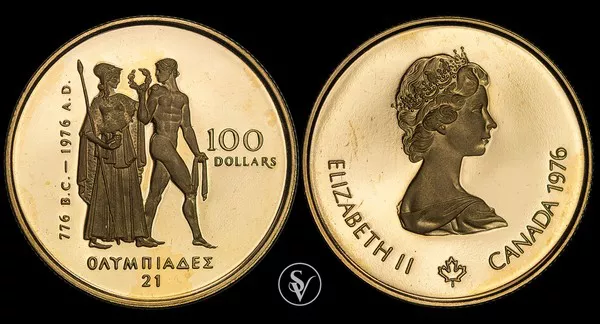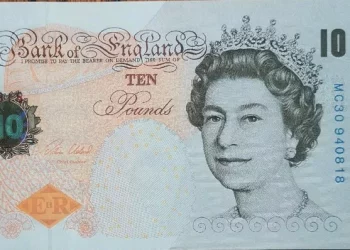Japan, one of the world’s largest economies, is a country that is deeply rooted in tradition while simultaneously embracing modernity. As an international financial hub, it attracts millions of tourists and business travelers each year. However, one of the common concerns among Canadian travelers is whether Japan accepts Canadian currency (CAD) for transactions. Understanding the nuances of currency exchange, payment methods, and financial practices in Japan is essential for anyone planning to visit or do business in the country.
Currency Exchange: A Fundamental Aspect of International Travel
When traveling internationally, currency exchange becomes an inevitable part of the journey. Japan operates on its national currency, the Japanese yen (JPY), which is a key element of its financial system. The yen is one of the most traded currencies in the world and plays a significant role in global forex markets. Therefore, for Canadian travelers, understanding how to exchange their money into yen is crucial.
The Role of Banks and Financial Institutions
Canadian dollars (CAD) are not directly accepted for transactions in Japan. Instead, Canadian travelers must exchange their CAD for yen. This can be done through various channels, including banks, currency exchange counters at airports, and specialized foreign exchange services.
In Canada, major banks such as RBC, TD Bank, and Scotiabank offer currency exchange services that allow Canadians to obtain yen before their departure. This option is particularly convenient for travelers who prefer to arrive in Japan with local currency in hand. It also allows them to avoid potentially higher exchange rates or fees at airport counters, which are often less favorable.
In Japan, currency exchange services are widely available at airports, banks, and major hotels. Some of the most trusted financial institutions for currency exchange in Japan include Mizuho Bank, Mitsubishi UFJ Financial Group (MUFG), and Sumitomo Mitsui Banking Corporation (SMBC). These banks offer competitive exchange rates, though it’s important to note that rates can vary slightly depending on the institution and location.
Exchange Rates and Fees
Exchange rates between the CAD and JPY fluctuate based on market conditions, and travelers should be aware of these changes when planning their trip. It is advisable to monitor exchange rates in the days leading up to the trip to secure the best possible rate. Additionally, most financial institutions charge a service fee for currency exchange, which can vary depending on the amount being exchanged and the method used.
Online platforms and mobile apps provide real-time exchange rate information, making it easier for travelers to track fluctuations and make informed decisions. Currency converters available on financial news websites can also help travelers understand how much yen they will receive for their CAD. It is generally recommended to exchange a reasonable amount of money at once to minimize the impact of fees on smaller transactions.
Payment Methods in Japan: Cash vs. Card
Japan is often described as a cash-centric society, which may surprise travelers from countries like Canada, where card payments are the norm. While Japan has seen a gradual shift toward electronic payments, cash remains king in many aspects of daily life.
The Dominance of Cash in Japan
In Japan, cash is the preferred payment method, particularly in smaller towns and traditional establishments such as local markets, small restaurants, and family-owned shops. Even in major cities like Tokyo and Osaka, many businesses, including some chain stores, still prefer cash transactions. This cultural inclination toward cash can be traced back to historical and societal factors, including a strong emphasis on trust and the tangible nature of cash.
For Canadian travelers, this means that having a sufficient amount of yen in cash is essential for a smooth experience. While it is possible to withdraw yen from ATMs using international debit or credit cards, not all ATMs in Japan accept foreign cards. ATMs in post offices, convenience stores like 7-Eleven, and major banks are generally reliable for international withdrawals.
Credit and Debit Card Usage
While cash is prevalent, Japan’s payment landscape is gradually evolving. Credit and debit cards are increasingly accepted in urban areas, particularly in larger retail stores, restaurants, hotels, and tourist attractions. Internationally recognized cards such as Visa, MasterCard, and American Express are the most widely accepted.
Canadian travelers should ensure that their cards are enabled for international transactions before departing. It’s also advisable to inform the issuing bank of the travel dates to avoid any disruptions in service. Additionally, some Canadian credit cards offer favorable exchange rates and waive foreign transaction fees, making them a cost-effective option for payments in Japan.
However, it’s important to note that not all businesses accept credit or debit cards, especially in rural areas. Even in some urban establishments, there may be a minimum spending requirement for card payments. As such, carrying a combination of cash and cards is the best approach.
Digital Payments and Mobile Wallets
In recent years, Japan has made strides in adopting digital payment methods, largely driven by the government’s push to increase cashless transactions. Mobile payment apps such as PayPay, LINE Pay, and Rakuten Pay have gained popularity, particularly among younger generations. These apps allow users to make payments by scanning QR codes or tapping their smartphones at compatible terminals.
However, Canadian travelers should be aware that these mobile payment systems are typically linked to Japanese bank accounts or mobile numbers, making them less accessible to foreigners. Apple Pay and Google Pay are also options for those with compatible devices, but their acceptance is still not as widespread as in Canada or other Western countries.
Traveler’s Checks: An Outdated Option?
Traveler’s checks were once a popular choice for international travelers due to their security and ease of use. However, their popularity has significantly declined with the advent of ATMs and credit cards. In Japan, the use of traveler’s checks is now quite limited, and they are only accepted at a few banks and major hotels.
For Canadian travelers, relying on traveler’s checks is not recommended, as finding places that accept them can be challenging. Instead, carrying a mix of cash and cards, as well as having access to ATMs, is a more practical and convenient approach.
The Impact of Exchange Rate Fluctuations
Exchange rate fluctuations can have a significant impact on the cost of travel and spending abroad. For Canadian travelers, the CAD/JPY exchange rate is a key factor in determining how much they will spend during their time in Japan. Understanding the factors that influence exchange rates can help travelers make more informed financial decisions.
Factors Influencing the CAD/JPY Exchange Rate
Several factors contribute to the fluctuations in the CAD/JPY exchange rate. These include differences in interest rates between Japan and Canada, economic indicators such as GDP growth and unemployment rates, and geopolitical events that affect market sentiment.
See Also: Why is the Canadian Dollar So Weak?
The Bank of Japan (BoJ) and the Bank of Canada (BoC) play pivotal roles in setting monetary policies that influence exchange rates. For instance, if the BoJ implements an interest rate cut, it could lead to a depreciation of the yen relative to the CAD, making it more expensive for Canadians to purchase yen. Conversely, if the BoC raises interest rates, it could strengthen the CAD against the yen.
Economic conditions in Japan and Canada also play a significant role. For example, strong economic performance in Japan, characterized by robust export growth and low unemployment, could lead to an appreciation of the yen. Conversely, economic challenges in Canada, such as declining oil prices (a major export for Canada), could weaken the CAD.
Hedging Against Currency Risk
Given the potential for exchange rate fluctuations, Canadian travelers might consider hedging against currency risk. This can be done by purchasing yen in advance when the exchange rate is favorable or using financial products such as forward contracts or currency options. However, these options are typically more relevant for business travelers or those with significant financial exposure to currency risk.
For most tourists, simple strategies such as monitoring exchange rates and using credit cards that offer competitive foreign exchange rates are sufficient. Some travelers also choose to exchange a portion of their currency at different times during their trip to mitigate the impact of unfavorable rate changes.
Practical Tips for Canadian Travelers in Japan
Understanding the financial landscape of Japan and being prepared with the right currency and payment methods can enhance the travel experience. Here are some practical tips for Canadian travelers:
Plan for Cash Needs
Since Japan is a cash-centric society, plan to carry enough yen to cover daily expenses, especially in areas where card acceptance is limited. Withdraw cash from ATMs at airports, convenience stores, or banks to ensure you have sufficient local currency.
Use Credit Cards Wisely
While credit cards are accepted in many urban areas, they are not universally accepted. Use cards for larger purchases and keep cash on hand for smaller transactions. Consider using a credit card that does not charge foreign transaction fees to save on costs.
Monitor Exchange Rates
Keep an eye on exchange rates before and during your trip. Use online currency converters and mobile apps to track rate fluctuations and exchange money when rates are favorable.
Inform Your Bank
Notify your bank of your travel plans to avoid any issues with card transactions while in Japan. This will help prevent your card from being blocked due to suspicious activity.
Be Prepared for Limited English
In some parts of Japan, especially in rural areas, English may not be widely spoken. Having some basic Japanese phrases related to money and payments, or using a translation app, can be helpful in navigating financial transactions.
Conclusion:
Japan is a country with a unique blend of tradition and modernity, and this is reflected in its financial practices. While the yen is the only currency accepted for transactions, Canadian travelers have several options for exchanging their money and making payments. Understanding the dominance of cash in Japan, the role of credit cards, and the impact of exchange rate fluctuations can help travelers manage their finances effectively during their visit.
For Canadian travelers, the key to a smooth financial experience in Japan lies in preparation. By planning ahead, monitoring exchange rates, and carrying a mix of cash and cards, they can ensure that they are well-equipped to handle the financial aspects of their trip. Whether exploring the bustling streets of Tokyo or the serene temples of Kyoto, being financially prepared will allow travelers to fully enjoy the richness of Japanese culture without the stress of monetary concerns.
Related Topics:



























